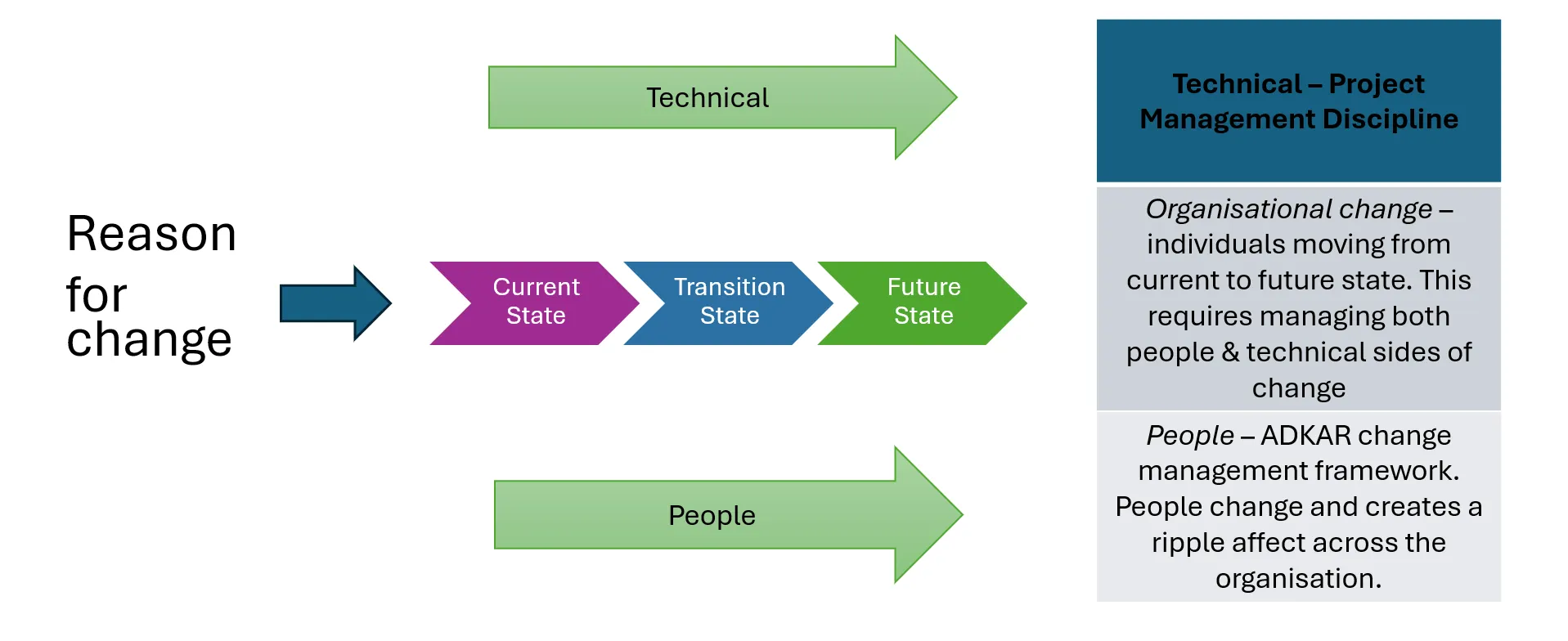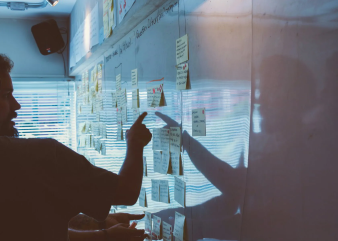Strategy Development
As leaders, it is important to understand the bigger picture, where we are heading, where we want the organisation to go in order to continue its longevity and viability. When leaders focus only on the short-term goals, a lot of the issues/ problems have not been planned for and there are no contingencies in place that can be used and applied when required. Even with a plan, things can go wrong. Not everything goes to plan. There are things that can happen that could not have foreseen, like the Covid Pandemic. The risk of a pandemic was low, yet the consequences of it were very high. When leaders plan for every possible situation they can think of, even those with low probability, it helps an organisation and its people adapt better to change.
In my experience, planning and executing change management in an organisation is paramount. As leaders, we need to model the behaviours we want to see in our people. When we check our own emotions regarding the change, we model to our teams how to face and deal with adversity. Things are constantly changing, the more we learn to accept and embrace change and all its mess, the more adaptable and resilient we become. I have applied and implemented the Prosci change management framework. Change management goes hand to hand with Organisational Learning & Development. Prosci is considered the gold standard for change management, although there are over 10 different change management frameworks we can choose from.
Organisations need to continuously change and evolve to succeed. Technology changes, processes change, products are evolving due to consumer preferences and tastes or safety and environmental considerations. Skills are also evolving, we need to develop new skills in our people and as leaders in order to manage and lead our teams effectively. Prosci Methodology best practices supports not only individuals through the change transitioning from current to future state, it also provides an approach which leads to project success. A lot of change management initiatives within an organisation are technology, restructure or learning projects all associated with change. The strategic direction of the organisation needs to be aligned with the change management and learning strategies in order to ensure the desired outcome is delivered. with strategy development, leaders need to consider the technical side of the change ie. the project management discipline. There’s the organisational side where we are moving individuals from the current state through the transition state (the messy part) to the desired future state.
When developing strategy, it is important to look at the bigger picture, what we want it to look like and what direction we want to go. Collaboration with leaders across the organisation impacted by the change and strategy is important for successful implementation. When we work together, as leaders, we utilise each other’s strengths to compliment and decrease any adverse impacts not being considered. Diversity in leadership drives creativity and innovation. It enables an organisation to consider things they may not have thought of due to the same types of leaders who do the same things. When we develop, grow and bring in new people, we can develop emerging leaders who may have ideas which are creative and innovative to help an organisation become the best it can be. When an organisation invests in its people, their people feel appreciated and will work towards the common goal. This is the successful implementation of strategy. Both in the short and long term.
When we as leaders ineffectively manage the transition state, this is where we lose good people – these are the people with the skills and experience to shape the organisation towards sustainability and success. Otherwise, it becomes a big mess and lots of band-aid fixes. Implementing change and strategy takes from 3 to 5 years to fully realise. However, there can be challenges along the way where we may need to pivot in order to adapt and grow. Change is the only constant in life and leadership. Nothing lasts forever. Everything is temporary. The third consideration in change is the people side. In summary, change management which aligns with the strategy often will look something like the image below. How can you as a leader effectively manage change and transformation in your organisation? How can you ensure you don’t lose good people throughout the transition state and bring them along on the journey to a sustainable future state?
Strategy aligned with Prosci Change Management Methodology

Reference:
https://www.prosci.com/methodology-overview


